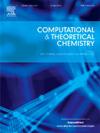Theoretically probing the asymmetric effect of donor for all-small-molecule organic solar cells
IF 3
3区 化学
Q3 CHEMISTRY, PHYSICAL
引用次数: 0
Abstract
The utilization of asymmetric donors is promising in All-Small-Molecule (ASM) organic solar cells (OSCs). In order to analyze the reason for the difference in performance between symmetric and asymmetric systems, the properties of three donors with different end-group units, frontier molecular orbitals (FMOs), dipole moment, reorganization energies in electron transition process, interfacial charge transfer (CT) mechanisms, charge separation rate (kCS) and charge recombination rate (kCR) were theoretically studied. Compared to symmetric SMD-ID, asymmetric SMD-CAReh:N3 and SMD-CAID exhibit larger dipole moment and fine-tuned energy. Meanwhile, more Frenkel exciton (FE)/CT states and CT mechanisms included direct excitation and hot exciton mechanisms were identified in the SMD-CAReh:N3 system, which were never found in the other two systems. Moreover, the asymmetric SMD-CAReh:N3 system has the highest kCS, indicating favorable charge transfer. This study helps to understand the effect of asymmetric strategies on OSC performance and provide theoretical guidance for developing potential asymmetric ASM donors.

从理论上探讨了全小分子有机太阳能电池供体的不对称效应
不对称供体在全小分子有机太阳能电池(osc)中的应用前景广阔。为了分析对称和非对称体系性能差异的原因,从理论上研究了具有不同端基单位的三种给体的性质、前沿分子轨道(FMOs)、偶极矩、电子跃迁过程中的重组能、界面电荷转移(CT)机制、电荷分离速率(kCS)和电荷复合速率(kCR)。与对称的SMD-ID相比,非对称的SMD-CAReh:N3和SMD-CAID具有更大的偶极矩和更精细的能量。同时,在SMD-CAReh:N3体系中发现了更多的Frenkel激子(FE)/CT状态和CT机制,包括直接激发和热激子机制,而在其他两个体系中没有发现。此外,不对称SMD-CAReh:N3体系的kCS最高,表明有利于电荷转移。本研究有助于了解非对称策略对OSC绩效的影响,并为开发潜在的非对称ASM供体提供理论指导。
本文章由计算机程序翻译,如有差异,请以英文原文为准。
求助全文
约1分钟内获得全文
求助全文
来源期刊

Computational and Theoretical Chemistry
CHEMISTRY, PHYSICAL-
CiteScore
4.20
自引率
10.70%
发文量
331
审稿时长
31 days
期刊介绍:
Computational and Theoretical Chemistry publishes high quality, original reports of significance in computational and theoretical chemistry including those that deal with problems of structure, properties, energetics, weak interactions, reaction mechanisms, catalysis, and reaction rates involving atoms, molecules, clusters, surfaces, and bulk matter.
 求助内容:
求助内容: 应助结果提醒方式:
应助结果提醒方式:


